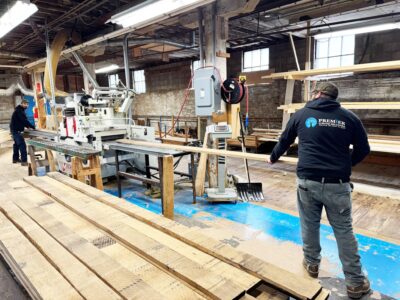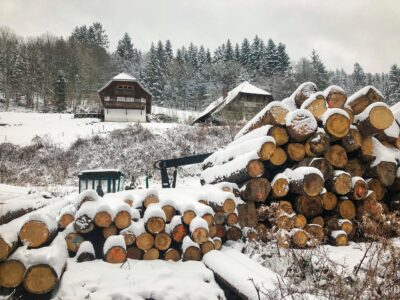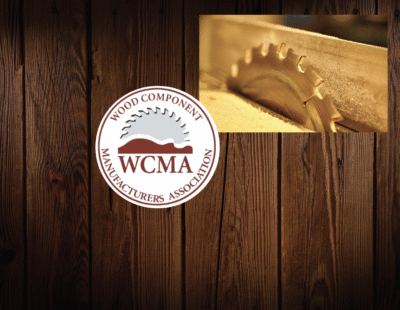Heading into a new year, we wonder how businesses will fare in the Hardwood sector and elsewhere. Production and demand of Hardwoods is changing, and is keeping one on their toes to make a profit, or stay afloat. As statistics have reported both in the U.S. and Canada, production has been in a downward trend since 2022 and continued throughout 2023. Those producing Red and White Oak, and Hard and Soft Maple are struggling to get logs, and buyers’ needs for many grades and thicknesses are not being met. Also, secondary manufacturers who use these species are controlling their inventories as consumers curb their purchases for finished goods, and due to inflation and higher interest rates. Some contacts noted having ample supplies, however, such as for Basswood and Aspen.
Certain areas contacted stated that Ash supplies are barely adequate to meet demand. Prices are firm. Some say that kiln-dried business is not strong but is keeping inventories down for many grades and thicknesses.
Demand is reported as slow but steady for kiln-dried Aspen. Inventories are sufficient to meet the market’s demand for most grades and thicknesses. Green production, noted some contacts, is not very high, but demand is on the slow side as well. Some sawmills struggle to find customers for total Aspen production.
It was commented that certain sawmills limited Basswood log purchases and so production for this species was down. Green Basswood supplies outpaced needs for most grades and thicknesses.
Birch demand, a species often used in Hardwood products such as furniture, millwork and moulding, flooring and cabinets, has been down due to slower housing construction and renovation markets. Activity has slowed for businesses in these sectors and so it has affected Birch sales. Green lumber markets are not strong either. Mill output is controlled, and is closely balanced between developing supplies and market needs. Contacts noted that kiln-dried Birch inventories are sufficient to meet demand. Prices have also gone down for most grades.
Contacts reported that market conditions were versatile for kiln-dried Hard Maple, with some noting shortages for many grades and thicknesses which drove prices. Inventories were reported as not having increased for most in-demand items, and demand had slowed. Wholesalers and secondary manufacturers noted changes in their businesses compared to a short time ago. Those who are buying say they have adequate supplies on hand and only purchasing for their short-term needs, causing competition for orders. Green Hard Maple demand, on the other hand, appears to be doing well, with production noted as low relative to buyers’ needs.
Soft Maple demand has been up and down these past years, and sawmill output is down, at low levels. However, there does not appear to be shortages, noted contacts. Domestic and export markets are rather quiet for orders of this species.
Red Oak business appears to be fair, but not strong either on domestic or international markets. Inventories were noted to have grown in the recent past which stabilized prices.
Contacts noted that upper grade White Oak is doing better, and for this species overall than other species. Relative to demand, supplies are still noted as low.
The Bank of Canada (BoC) Governor Tiff Macklem stated in mid-November interest rates might be at their peak, given that excess demand had vanished and weak growth was expected to persist for many months.
To control inflation, the BoC raised rates 10 times between March 2022 and July 2023, pushing them to a 22-year high of 5.00 percent. The inflation rate rose to more than 8 percent in 2022, eased to 3.1 percent in October 2023, still above the bank’s 2 percent target.
“This tightening of monetary policy is working, and interest rates may now be restrictive enough to get us back to price stability,” Macklem told the Saint John Region Chamber of Commerce in New Brunswick.
“We expect the economy to remain weak for the next few quarters,” he added. “The excess demand in the economy that made it too easy to raise prices is now gone.” Macklem reiterated that the bank was prepared to raise rates again if needed.
While Macklem stated in a late October interview rates may have peaked, his remarks of November marked the first time he said formally that borrowing costs could be high enough.
His dovish comments were in line with predictions from analysts and money markets that the bank’s next move will be to cut rates by the middle of next year.
In his speech of November, Macklem recognized the impact of restrictive monetary policy, “Higher interest rates are squeezing many Canadians, but these rates are relieving price pressures.”
“To return to low inflation and stable growth in the years ahead, we need these higher interest rates and slow growth in the short term,” he added.
On November 9, the bank said the era of super-low interest rates was likely over and warned businesses and households to plan for higher borrowing costs than they were used to in recent years. Some 60 percent of mortgage holders have yet to renew their home loans at higher rates, the BoC said.







